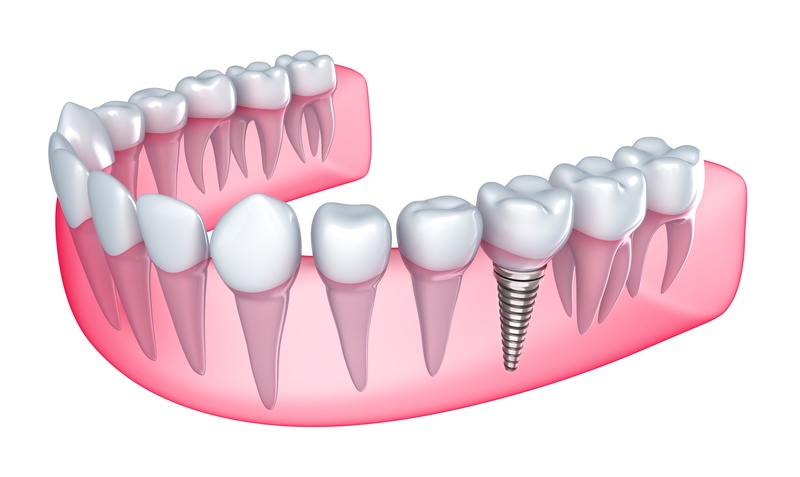
Missing tooth for years? Fret not! Yes, delayed implantation can be successfully done years after tooth extraction. Advancements in dental technology and techniques have made it possible to get dental implants even after a significant period has passed since the extraction. These implants offer numerous benefits, including natural appearance and function, stability, and preservation of jaw structure. Dental implants provide a permanent solution without the need for adhesives or regular removal for cleaning, making them a viable option for those considering them years after extraction.
Delayed Implantation: Solution for a Missing Tooth For Years

Dental implants are a popular solution for replacing missing teeth. They are durable, long-lasting, and provide a natural-looking result. But what if you had a tooth extracted years ago? Can you still get a dental implant? The answer is yes, in most cases. Dental implants can be done years after extraction, as long as the jawbone is healthy and has enough density to support the implant.
The Dental Implant Process:
- Oral Health Evaluation: A comprehensive assessment of your oral health is the initial step. This includes an examination of your jawbone, gums, and neighboring teeth. If your jawbone has weakened since extraction, a bone graft may be necessary to reinforce it before implant placement.
- Implant Surgery: Once your jawbone is prepared, the dental implant surgery can be scheduled. During this procedure, a small titanium post is inserted into the jawbone, serving as the root for the replacement tooth. Over time, the implant naturally integrates with the jawbone through osseointegration, forming a robust foundation for the prosthetic tooth.
Factors to Keep in Mind:
- Jawbone Condition: The state of your jawbone is a pivotal factor. Severe deterioration may necessitate a bone graft before implant placement.
- Gum Health: Good gum health is crucial for implant success. Any gum disease or oral health issues should be addressed before proceeding with the implant surgery.
- Time Since Extraction: The duration since the tooth extraction is significant. With more time passed, the jawbone’s shape and density can change, potentially requiring additional procedures for a successful outcome.
Benefits of Dental Implants:
- Permanent Solution: Dental implants offer a long-lasting solution for missing teeth. Unlike dentures or bridges that may require periodic replacement, well-maintained dental implants can last a lifetime.
- Natural Look and Function: Implants are custom-crafted to match the color, shape, and size of your existing teeth, resulting in a seamless and natural appearance. They also function just like natural teeth.
- Preservation of Jawbone: Implants help maintain your jawbone’s structure, preventing bone loss and preserving your facial appearance.
These points outline the dental implant process, factors to consider, and the benefits they offer to those with missing teeth.
Comparison: Dental Implants vs. Other Tooth Replacement Options
When considering tooth replacement options for teeth extracted years ago, it’s important to weigh the pros and cons of each. Let’s compare dental implants to other popular options: dentures and bridges.
Dental Implants
– Permanent solution
– Natural-looking and functioning teeth
– Preserves jawbone structure
– No impact on adjacent teeth
– Requires surgery and healing time
Dentures
– Removable
– Can be uncomfortable
– Can affect speech and eating
– May require adhesive for stability
– Jawbone can deteriorate over time
Bridges
– Non-removable
– Require adjacent teeth for support
– May require altering adjacent teeth
– Can cause bone loss in the area of the missing tooth
– Lifespan of 10-15 years
Tips for Successful Dental Implants Years After Extraction
If you’re considering dental implants years after tooth extraction, here are some tips to ensure a successful outcome:
1. Consult with a reputable and experienced dental professional who specializes in dental implant surgery.
2. Discuss your oral health history, including the extraction and any subsequent changes in your jawbone or gums.
3. Follow a thorough oral hygiene routine to maintain the health of your gums and surrounding teeth.
4. Attend regular dental check-ups and cleanings to monitor the condition of your implants and overall oral health.
5. Avoid habits that can negatively impact the success of your implants, such as smoking or chewing on hard objects.
In conclusion, dental implants can be done years after extraction, as long as the jawbone is healthy and has enough density to support the implant. Factors such as the condition of the jawbone, gum health, and time since extraction should be considered. Dental implants offer a permanent solution with natural-looking results, preserving the structure of the jawbone. Comparing them to other tooth replacement options, dental implants have several advantages. By following these tips, you can increase the chances of a successful outcome for your dental implant procedure.
Key Takeaways: Can Dental Implants Be Done Years After Extraction?
- Yes, dental implants can be done years after tooth extraction.
- The jawbone needs to be healthy and have enough density to support the implant.
- A bone graft may be necessary if there is not enough bone present.
- Implants can be placed even if the extraction site has healed.
- Consult with a dental professional to determine the best course of action.
Frequently Asked Questions
Is it possible to get dental implants years after extraction?
Dental implants can be done years after tooth extraction, often due to reasons like finances, fear, or delayed need. Waiting too long, though, can lead to more bone loss, potentially impacting implant success. Consult with a specialized dentist or oral surgeon for personalized guidance.
What are the advantages of getting dental implants years after extraction?
Getting dental implants years after tooth extraction offers several advantages.
- Long-term Solution: Dental implants provide a durable solution for missing teeth, combining functional and aesthetic benefits. They closely mimic natural teeth in appearance, feel, and function, boosting your confidence in daily activities.
- Bone Preservation: Dental implants contribute to jawbone preservation. Following tooth extraction, the jawbone can deteriorate, but implants stimulate the bone during chewing, maintaining its density and preventing further loss. This preservation also helps retain facial structure and appearance.
Are there any risks or complications associated with getting dental implants years after extraction?
Dental implants, though generally safe and effective, can pose risks and complications, especially when placed years after tooth extraction. Key concerns include potential bone loss at the extraction site, requiring a bone graft to enhance bone volume, which can extend treatment duration and cost. There is also a slight risk of infection, nerve damage, or implant failure, but these are rare when performed by a skilled dental professional.
What factors determine the success of dental implants placed years after extraction?
The success of dental implants placed years after extraction hinges on key factors. Adequate bone volume and quality in the extraction site are essential for a stable implant foundation. Significant bone loss may necessitate a pre-implant bone graft.
Maintaining overall oral health is crucial. Good hygiene and regular dental check-ups are vital for implant and tissue health. Factors like smoking, specific medical conditions, and medications should be discussed with the implant specialist, as they can impact implant success.
What is the general process of getting dental implants years after extraction?
The process of getting dental implants years after tooth extraction typically involves several steps:
- Oral Health Evaluation: An implant specialist conducts a comprehensive examination of oral health and bone structure, often using X-rays or CT scans to assess the jawbone’s condition.
- Implant Placement: If there is sufficient bone volume, a titanium implant is surgically inserted into the jawbone. After a few months of healing, the implant integrates with the bone, and an abutment and crown are attached to complete the restoration.
- Bone Graft (if needed): In cases of significant bone loss, a bone graft may be necessary before implant placement. This involves using bone from another source or synthetic materials to build up the jawbone. The graft heals and integrates with existing bone before the implant procedure can proceed.
How soon after extraction can one go for Dental Implant? – Dr. Mohammed Fayaz Pasha
Final Thoughts
Delayed Implantation is a solution for a missing tooth for years. Advancements in dental technology make it possible. Consider factors like jawbone condition and overall oral health. Consult a specialized dentist for personalized guidance. Dental implants enhance your smile and overall well-being. Regain confidence with this option!
Call or Book appointment online
:Ace Dental Care Alpharetta office: 678-562-1555 - Book Now
Ace Dental Care Norcross office: 770-806-1255 - Book Now
Disclaimer
This blog post was generated by artificial intelligence. The content of this post may not be accurate or complete, and should not be relied upon as a substitute for professional advice. If you have any questions about the content of this post, please contact us.
We are constantly working to improve the accuracy and quality of our AI-generated content. However, there may still be errors or inaccuracies. We apologize for any inconvenience this may cause.





